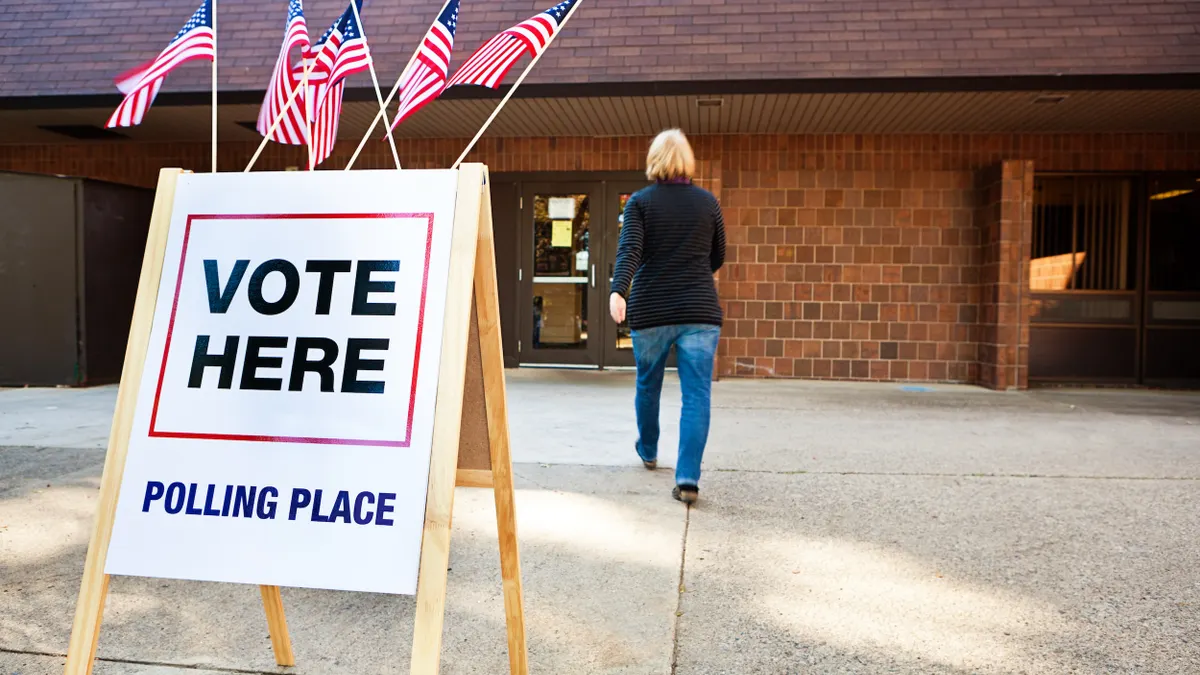In a talent market challenged by scarcity, the "where" of employment can matter just as much as, if not more than, the "what," "when" and "why."
Larger cities continue to pull in a significant amount of skilled workers, according to recent data from LinkedIn's Economic Graph initiative. About 140 of every 10,000 LinkedIn members in Austin, TX, moved to the city in the past month, which was the highest rate among all cities measured and ahead of both Denver and Nashville, TN.
Still, other metropolitan areas counted in LinkedIn's reporting have experienced significant outward migration in the past year, many of them located in the U.S. Midwest and south. Wichita, KS, showed the highest such migration, with about 269 of every 10,000 of the area's LinkedIn members having left in the past 12 months. Other cities with high rates of departures include Bloomington, IN, and Urban-Champaign, IL, per LinkedIn.
Generally, the best cities for job seekers on perennial lists tend to be large cities. Those in areas like Silicon Valley and the Northeast megalopolis rank highly in indicators like having a low unemployment rate, low competition for jobs and positive company ratings, according to Indeed.
At the same time, relocation is down dramatically, Andrew Challenger, vice president of outplacement firm Challenger, Gray and Christmas, told HR Dive in an interview. Challenger cited various reasons workers aren't moving: "If jobs are eliminated, they don't have to relocate," he said. "We're also seeing a real rise of tech that allows people to telecommute."
But concentration around major cities doesn't mean workers are content. A March survey of knowledge workers by Citrix Systems and OnePoll found that 75% would leave the large cities they lived in for other locations. Cost was a key driver for respondents in that survey — 58% said the cost of living in cities was "crippling."
Programs target remote workers, those with debt
In recent years, a few state and city governments, as well as some private efforts, have launched initiatives to capitalize on those sentiments and grow local talent pools.
Maine: Opportunity Maine Tax Credit
Maine offers tax credits to college graduates who pay state taxes. The program began in 2008 and rewards graduates in varying ways depending on when they earned their degree and the type of degree they earned.
For example, if the graduate is a Maine resident for a given tax year, and he or she both a) earned a degree at an accredited college or university located anywhere in the U.S. and b) graduated on or after January 1, 2016, the graduate is eligible for either a refundable tax credit (if he or she earned an associate's degree or a STEM field bachelor's degree) or a tax credit that offsets any individual income taxes owed to Maine (if the graduate earned a non-STEM bachelor's degree, or a graduate degree at a Maine school). Those who graduated between 2008 and 2015, however, have to have earned their degree at a Maine college or university in order to quality for credit.
While the initial message behind offering the credit was essentially "please stay," according to Nate Wildes, executive director at Live and Work and Maine, an organization that promotes the tax credit, it has now expanded given the larger national conversation around student debt.
"This offering has a really strong emotional attachment," said Wildes, who said he's heard positive anecdotal feedback from employers who've spread awareness of the program among their own workforces. "The value of something like that as a recruiting tool is quite large."
Tulsa, Oklahoma: Tulsa Remote
The Tulsa Remote program provides grants to workers who hold either full-time remote work positions or who are self-employed outside Tulsa County, Oklahoma. Grants are intended to cover some of the cost of relocation in addition to some living expenses, and applicants must be able to move to the city within six months, according to the program's website.
First announced in 2018, the program is operated by the George Kaiser Family Foundation, a Tulsa-based organization founded by billionaire businessman George Kaiser. The program originally announced it would award grants valued at $10,000 each. But the size of the applicant pool prompted expansion of the program, according to a report by the Tulsa World. The number of recipients grew to 100, far from the 20 to 25 originally envisioned, and the foundation subsequently decided to offer recipients an additional $1,000 as a housing stipend over the original plan of providing a furnished apartment for a three-month period, the Tulsa World said.
Vermont: Vermont Remote Worker Grant Program
Similar to Tulsa's incentive, Vermont's remote worker grant program allows applicants who work primarily from a home office or co-working space to earn grants worth up to $5,000 per year over two years.
The grants are intended to help pay for "qualified remote worker expenses," including those put toward the cost of relocation, computer software or hardware, broadband access or upgrade, or membership at a coworking space, according to the Vermont Department of Economic Development.
Vermont launched the program in January partly in response to the state's struggle attracting young talent, Nate Formalarie, communications director of the Vermont Department of Tourism and Marketing, told HR Dive in an interview. There's also the issue of bolstering the state's tax base, said Formalarie, who added that demand for the program exceeded what officials had projected.
The future of relocation
Despite the creativity of newer programs, a common criticism is that there is not enough data on their effectiveness, particularly as worker relocation continues on a downward trend.
Challenger said he hadn't seen much in the way of data to give to either side of the incentive program issue, though he did note it's common for local governments to create new ways to attract talent as a means of, among other things, improving the local tax base. In his firm's home city of Chicago, for instance, Challenger said the city government has offered tax incentives for businesses in surrounding counties to bring parts of the headquarters to the downtown area.
"It's hard to get 20 to 23 year olds to move to the suburbs," Challenger said, "so a lot of organizations are moving their headquarters. That's certainly a trend."
Moving offices isn't the only way to attract talent. A 2018 report by the Pew Charitable Trusts detailed efforts in cities like Harmony, MN, and Marquette, KS, where officials have initiated programs that incentivize the building of homes.
But financial incentives are only part of what new residents want out of a place to live, Challenger said. Employers need to consider that employees moving often just want a good place to start families, and they also give weight to practical considerations like weather. But examples in which employers pay their own workers to leave and move elsewhere may be potential win-win situations, he said, particularly if cost of living is a concern in the employer's locale.
Employees who want to move are often drawn to a change of careers, better tax rates or both, Challenger said. But he noted that cities themselves are changing, too, becoming more sprawling. "I would expect to continue to see urban areas expand," he said.





















